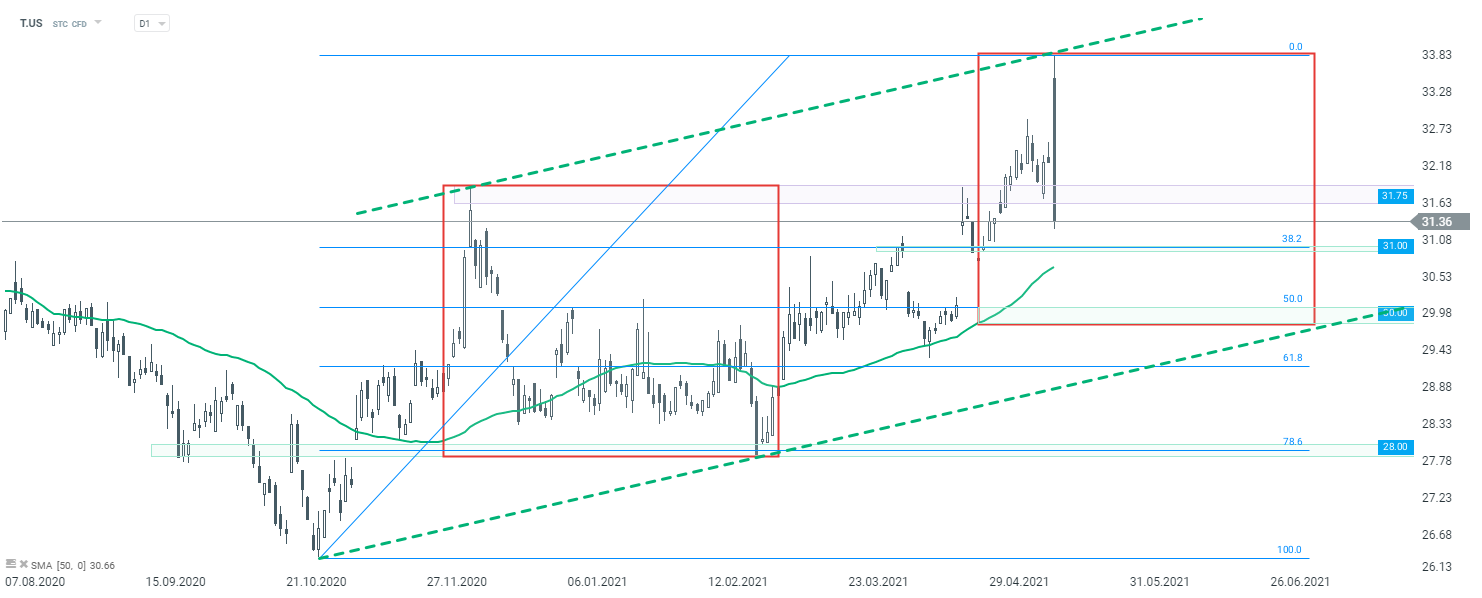AT&T (T.US) announced on Monday that it will merge its WarnerMedia unit with Discovery (DISCA.US). Merger will create a massive media company that will be able to compete with Netflix or Disney. However, it also is a sign of defeat for AT&T, whose strategy to vertically integrate distribution and content creation businesses failed. Let's take a quick look at the merger.
Deal with Discovery
AT&T, US telecommunications giant, announced that it will merge it's WarnerMedia business unit with Discovery and the combined company will be spun-off as an independent entity. 71% of a new company will be owned by AT&T shareholders while the remaining 29% will be owned by Discovery shareholders. David Zaslav, CEO of Discovery, will become a Chief Executive Officer of a new company while AT&T will appoint a chairman. Combined company will own a large portfolio of media assets, that includes reality TV assets of Discovery as well as content production assets of AT&T, including HBO. Transaction was already approved by Boards of AT&T and Discovery, and is expected to close in mid-2022. Transaction is structure in a tax-friendly manner and does not require approval from shareholders.
According to AT&T press release, the combined company is projected to have a revenue of around $52 billion in 2023, an adjusted EBITDA of around $14 billion and expected annual cost synergies of around $3 billion. AT&T will receive $43 billion in a combination of cash, debt securities as well as through retention of part of debt by WarnerMedia. Thanks to this compensation AT&T may lose the title of the most indebted non-financial US company.
AT&T strategy fails
While the merger is expected to result in synergies from combining AT&T and Discovery assets, it also can be seen as a sign of defeat for AT&T's strategy. AT&T acquired Warner Media for $85 billion 3 years ago. Aim of that acquisition was to create a vertically integrated company with content production and distribution businesses. However, according to a Dow Jones report, media assets of AT&T were valued at around $50 billion in deal talks with Discovery. Value destruction of that acquisition and failure of AT&T vertical integration strategy look apparent, so the decision to spin-off WarnerMedia assets can be seen as a step in the right direction. Timing of the deal can also be seen beneficial for AT&T shareholders - share price of Discovery plummeted at the end of March amid forced liquidation of positions linked to Archegos Capital, US hedge fund that has imploded due to excessive leverage. Depressed share price of Discovery means that AT&T shareholders will receive a larger "piece of the pie".
Market reaction
Reaction of the market on Monday has been mixed. Shares of AT&T (T.US) launched yesterday's trading around 3.7% higher but finished the day almost 3% below Friday's closing price. Discovery (DISCA.US) opened with a 10% bullish price gap but finished trading with a 5% drop. Both companies are also trading lower in the US premarket trading today. Shares of main competitors of the combined company, like for example Netflix, dropped on the back of the news but have managed to recover losses by the end of the session yesterday.
Taking a look at AT&T (T.US) from a technical point of view, we can see that the company has been trading in an upward move since the end of October 2020. Opening with a big bullish price gap allowed the company to paint a fresh post-pandemic high. However, bulls failed to hold onto those gains and the stock erased gains later on. Current premarket quotes point to the launch of today's session slightly above the $30 mark. Two levels to watch for the stock are marked with retracement of the upward move started in October. The 50% retracement marks key, near-term support and can be found at $30, while 38.2% retracement in the $31 area is a key, near-term resistance to watch.
 Source: xStation5
Source: xStation5
Daily summary: Sentiments on Wall Street stall at the end of the week🗽US Dollar gains
AbbVie near 1-month low after earnings report 📉
Wall Street optimism tempers amid falling odds of December Fed rate cut
DE40: Decline of sentiment in Europe


